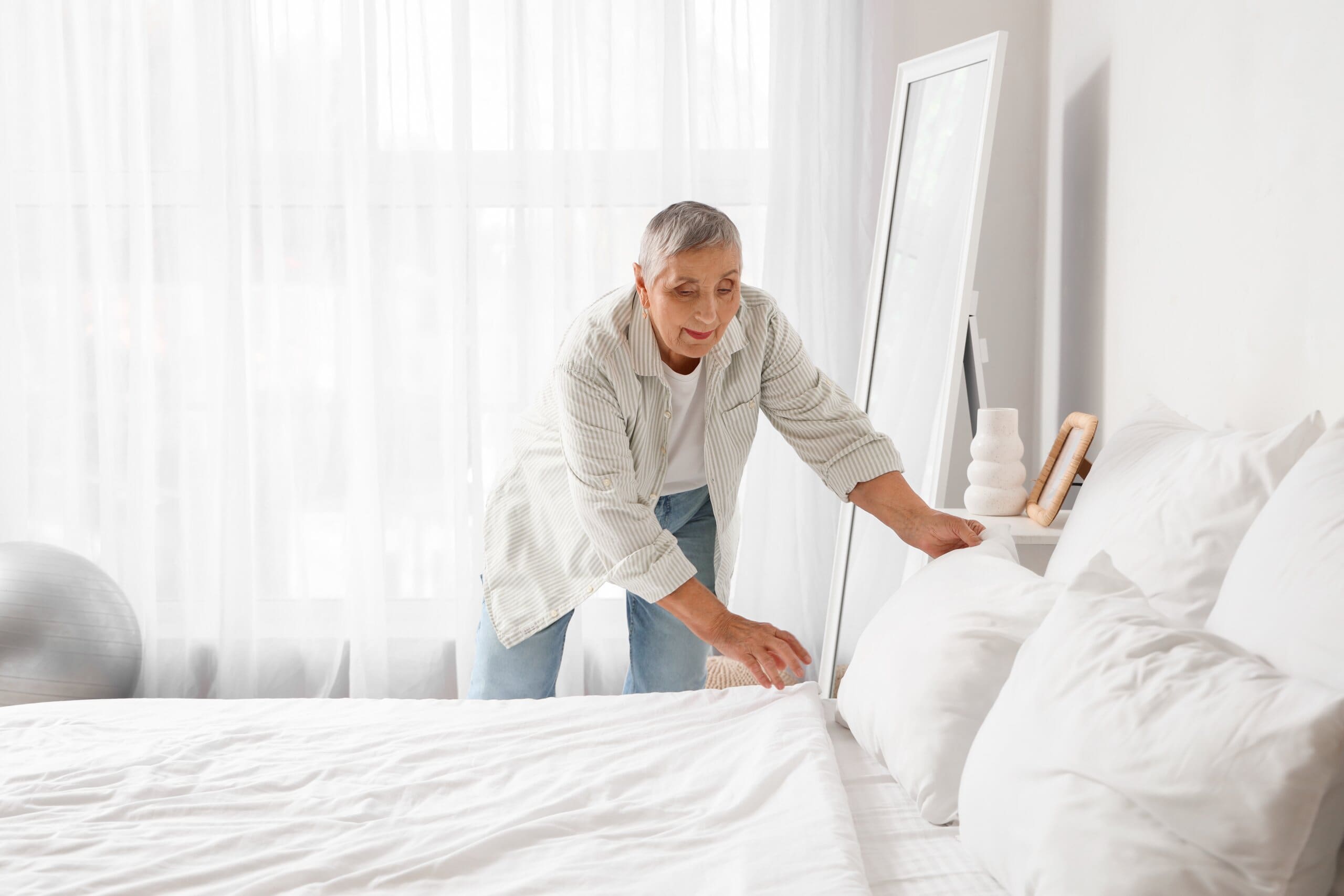
Speak to an expert: 0333 0069769
Everything you need to know about no-turn mattresses and how to look after them.
If you haven't purchased a mattress in a while, it may come as a surprise that your new mattress probably only has one side to sleep on. No-turn mattresses have been rising in popularity in recent years due to their easy maintenance and high-quality designs. But you may be wondering, will a one-sided mattress last half as long as a double-sided style? Find out everything you need to know about the no-turn mattress in our helpful buying guide.
No-turn mattresses are unable to be used on both sides, as they're designed with specific layers in a certain order. If you're unsure if you have a turnable or non-turnable style, take a look at the underside of your mattress. It should be obvious if one side isn't suitable for sleeping, as it'll have a lack of comfort layers or not look visually appealing. If you can't sleep on both sides, that means it's a no-turn style.
Typically, no-turn mattresses will have a different material on the underside that is often a different colour to the rest of the mattress, similar to the kind of material you would see when you lift a sofa cushion. The soft top side of the mattress is designed to be the comfort layer while the firmer underside is there to act as a supportive structure.
On the non-usable side, you can usually feel the springs or wooden frame through the fabric, which would, of course, make it very uncomfortable to sleep on.
As the name implies, there's no need for a no-turn mattress to be turned over completely. Plus, it would be extremely uncomfortable to lay on even if it was flipped since it has no comfort padding on the opposite side.
However, you can rotate it 180 degrees to even out wear and tear. Rotating the mattress so the head end becomes the foot end makes sure that every part gets used. Which in the long run, evens out the wear and prevents sagging or compression in any one spot.
If you're sleeping on the mattress daily, you should aim to rotate it once every three months. Here's how to rotate a mattress:
Many modern-day mattresses are designed to be no-turn. This is because sleep technology innovation has got rid of the need to completely turn them over to avoid uneven wear and tear. Materials over time have become more durable and now manufacturers can focus on creating the perfect supporting structure and comfort layer, rather than needing to make the mattress usable on both sides.
While turning a no-turn mattress isn't necessary, all styles can benefit from a 180-degree rotation every few months to make sure you're using all parts of the mattress.
Turnable mattress styles are still available to buy and aren't any less comfortable. They just have to be flipped every so often to take advantage of the double-sided design. If you have limited mobility or are simply likely to forget to flip, a no-turn style is probably much more suitable for you. Low-maintenance care is a huge reason for this type of mattress' rise in popularity. Flipping heavy mattresses can be challenging, especially if you have to do it by yourself. If you need to do so, however, then make sure to follow our guide on How Often Should I Flip Or Turn My Mattress?

If you’re now wondering “Are no turn mattresses any good?” then here’s a list of all the pros and cons to let you know exactly how great they are!
The average lifespan for all mattresses is around seven years. You can extend how long your mattress will last by taking care of it where you can. For example by carrying out regular cleaning, rotating 180 degrees every few months and using a mattress protector.
Unsure of what mattress style is best for you? Try our MattressFinder™ quiz to find your perfect mattress match, or read through our other informative Buying Guides. You can also browse our website - we have a huge range of styles, including turnable and non-turnable mattresses that are available for free next-day delivery.